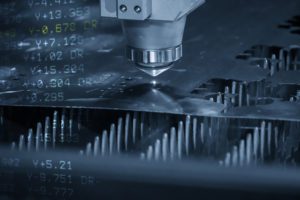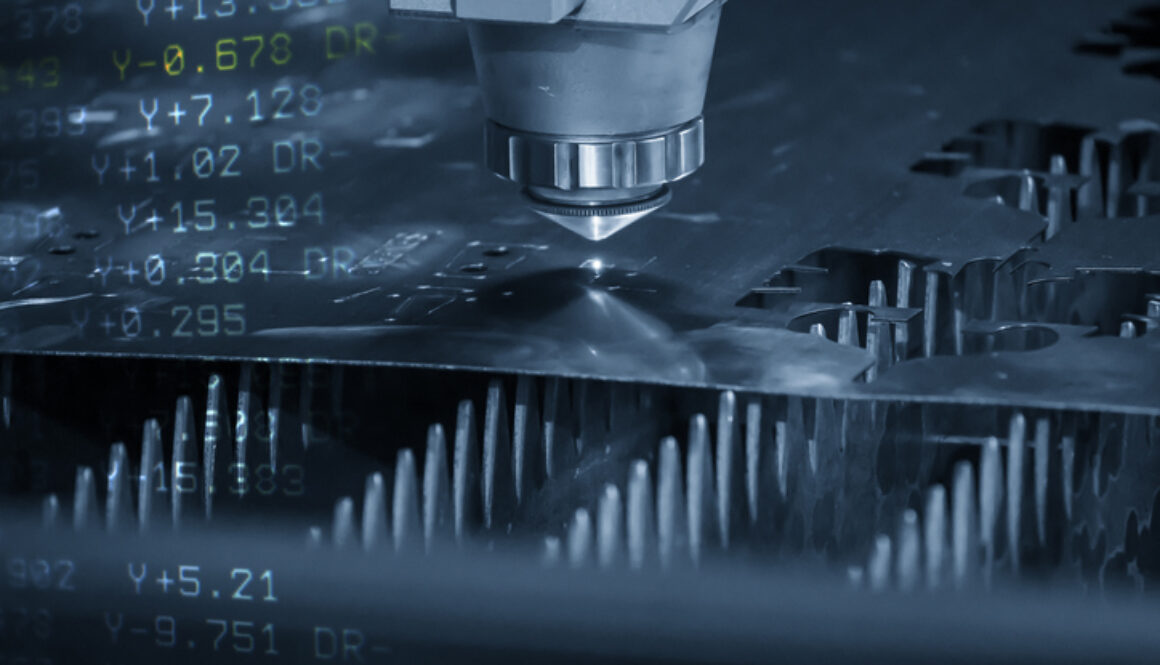Shining a Light on Laser Precision: Fiber Lasers vs. CO2 Lasers

Precision manufacturing demands the right tools for the job. When every micron matters and quality standards soar higher each year, choosing between fiber lasers and CO2 lasers can make or break your production line efficiency. Both technologies have carved out significant market share, yet they serve distinctly different purposes across various industries.
Understanding the differences between these laser systems will help you make informed decisions for your specific applications. From energy consumption and maintenance requirements to engraving capabilities and material compatibility, each technology brings unique strengths to the table.
We’ll uncover a comparison between both laser types, their real-world applications, and performance metrics to help you determine which solution aligns best with your operational needs and budget constraints.
Understanding Fiber Laser Technology
Fiber lasers represent a leap forward in solid-state laser technology. These systems generate focused light beams through doped optical fibers that serve as the gain medium. The process begins when a seed laser beam passes through an optical fiber containing amplifying materials, then travels through a series of optical mirrors before emerging at significantly higher power levels.
The construction of fiber lasers offers several inherent advantages. Their solid-state design eliminates many moving parts found in traditional laser systems, resulting in enhanced reliability and reduced maintenance requirements. The fiber medium itself provides exceptional beam quality, enabling precise control over the laser output.
Key Advantages of Fiber Lasers
Fiber laser applications benefit from superior energy efficiency, converting up to 30% of input power into usable laser output compared to just 10-15% for CO2 systems. This efficiency translates to substantial cost savings over time, particularly for high-volume operations.
The wavelength characteristics of fiber lasers (typically around 1.06 micrometers) make them exceptionally well-suited for processing metals. This wavelength is readily absorbed by most metallic materials, resulting in clean cuts and precise marks with minimal heat-affected zones.
Maintenance requirements remain minimal due to the absence of complex mirror alignments and gas refills. Most fiber laser systems operate reliably for 25,000 to 100,000 hours before requiring significant service, compared to 1,000 to 5,000 hours for CO2 lasers.
Fiber Laser Applications Across Industries
The automotive sector has embraced fiber laser technology for critical marking applications. Serial number engraving on engine components, transmission parts, and safety systems ensures complete traceability throughout each part’s lifecycle. The permanent, high-contrast marks resist wear and environmental exposure while meeting strict regulatory requirements.
Electronics manufacturing leverages fiber lasers for marking identification codes on components. The precision achievable with fiber systems enables the processing of increasingly miniaturized components without compromising quality.
Medical device manufacturing represents another growing application area. Fiber lasers can mark surgical instruments, implants, and diagnostic equipment with biocompatible inks or direct surface modifications that withstand sterilization processes.
CO2 Laser Technology Fundamentals
CO2 lasers generate coherent light through an electrically stimulated gas mixture containing carbon dioxide, nitrogen, and helium. The resulting infrared beam operates at a wavelength of 10.6 micrometers, significantly longer than fiber laser wavelengths.
This longer wavelength provides unique advantages for certain materials and applications. The beam characteristics allow for excellent absorption by organic materials, including:
- Wood
- Paper
- Leather
- Plastics
The relatively broad beam profile enables efficient processing of larger surface areas.
CO2 Laser Strengths and Capabilities
Power scalability represents a significant advantage of CO2 laser systems. High-power CO2 lasers can deliver tens of kilowatts of power, making them suitable for thick metal processing and high-speed production lines. This power capability often exceeds what current fiber laser technology can provide at competitive costs.
The beam quality of CO2 lasers works particularly well for applications requiring broader focal spots or longer depth of focus. Engraving applications often benefit from these characteristics, as they can produce consistent results across slightly uneven surfaces.
Material versatility extends beyond metals to include ceramics, glass, and composite materials. The longer wavelength interacts differently with various materials, sometimes providing superior results compared to shorter wavelength alternatives.
Real-World CO2 Laser Applications
Woodworking industries rely heavily on CO2 lasers for engraving operations. Furniture manufacturers use these systems to create intricate decorative patterns and mark product information with exceptional detail. The result provides minimal post-processing, streamlining production workflows.
Textile and leather goods manufacturing employs CO2 lasers for engraving brand logos. The sealed edges produced by the performance of the laser often eliminate the need for additional finishing processes.
Medical devices benefit from CO2 lasers for engraving, providing precision and durability. Their unique wavelengths allow for detailed marking on materials like stainless steel and titanium, ensuring legible and long-lasting engravings for compliance and traceability in the medical field.
Automotive applications focus primarily on engraving operations for interior components, gaskets, and various polymer parts. The ability to process thick materials at high speeds makes CO2 lasers valuable for specific manufacturing processes.
Resource: See how our laser marking systems are used across industries — from automotive to medical and beyond. View Applications.
Head-to-Head Performance Comparison
Energy efficiency clearly favors fiber laser technology. Fiber lasers consume up to 50% less electricity than comparable CO2 systems, leading to significant operational cost reductions. This efficiency advantage compounds over time, particularly in high-utilization environments.
Precision capabilities vary depending on the specific application. Fiber lasers excel at fine detail work on metals, producing narrow kerf widths and minimal heat-affected zones. CO2 lasers perform exceptionally well on organic materials and can achieve excellent results on thicker sections where higher power levels prove beneficial.
Processing speed depends heavily on material type and thickness. Fiber lasers typically demonstrate superior speeds on thin to medium thickness metals, while CO2 lasers may hold advantages for certain thick materials or when processing non-metallic substrates.
Maintenance requirements strongly favor fiber laser systems. The solid-state construction eliminates gas refills, complex mirror alignments, and frequent component replacements. This translates to higher uptime percentages and lower total cost of ownership.
Material Compatibility Considerations
Metal processing applications generally favor fiber laser technology due to wavelength absorption characteristics. Stainless steel, aluminum, brass, and carbon steel all respond well to fiber laser processing, producing clean edges and precise marks.
Non-metallic materials often perform better with CO2 laser systems. Wood, acrylic, leather, paper, and many plastics absorb the longer CO2 wavelength more effectively, resulting in better edge quality.
Some materials can be processed effectively by both technologies, though the optimal choice depends on specific requirements such as edge quality, processing speed, and cost considerations.
Making the Right Choice for Your Application
Project requirements should drive the selection process. Consider the primary materials you need to process, required precision levels, production volumes, and quality standards. These factors will help narrow down the most suitable technology.
Budget considerations extend beyond initial purchase price to include operational costs, maintenance expenses, and potential productivity gains. Fiber lasers often provide better long-term value despite higher upfront costs.
Industry-specific requirements may mandate certain capabilities or certifications. Medical device manufacturing, aerospace applications, and automotive production each have unique standards that may influence laser selection.
Partner with Laser Marking Experts
Selecting the right laser technology requires careful consideration of your specific applications, materials, and production requirements. The choice between fiber lasers and CO2 lasers can significantly impact your operational efficiency, product quality, and bottom line.
Get Expert Guidance from Technomark
Technomark’s laser marking specialists bring decades of experience helping manufacturers choose and implement the right marking solutions. Our team can evaluate your specific applications and recommend the optimal laser technology for your needs.
Contact Technomark today to discuss your laser marking requirements and discover how the right technology can enhance your production capabilities.


